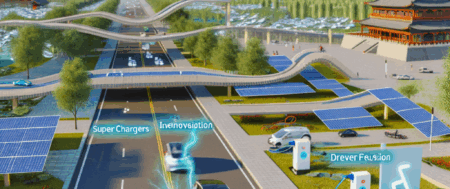Navigating the complexities of China’s automotive sector, the largest automotive market in the world, offers a unique blend of challenges and opportunities for foreign automakers and domestic car brands alike. With the growing economy and urbanization, along with environmental concerns, there’s a soaring demand for Electric Vehicles (EVs) and New Energy Vehicles (NEVs), supported by significant government incentives. However, foreign companies must tackle the intricate regulatory landscape and often engage in joint ventures to meet local laws and gain essential market insights. Success in this fiercely competitive market depends on aligning with the government’s green vision, understanding consumer preferences, leveraging strategic partnerships, and keeping up with technological advancements. Adapting to these dynamics is key for tapping into the vast opportunities presented by China’s commitment to innovation and sustainability in the automotive industry.
In the fast-paced world of the global automotive industry, the China automotive market emerges as the largest and most dynamic, setting the pace for future trends and serving as a barometer for market competition, technological advancements, and strategic partnerships. As the epicenter of automotive production and sales, China’s rapidly growing economy, increasing urbanization, and burgeoning middle class have positioned it as a key player on the world stage, attracting both domestic car brands and foreign automakers alike. This thriving market is uniquely characterized by its high demand for electric vehicles (EVs) and new energy vehicles (NEVs), fueled by environmental concerns and robust government incentives, making it a hotbed for innovation and growth.
Navigating this complex landscape requires a deep understanding of China’s regulatory landscape, consumer preferences, and the intricate dance between joint ventures and strategic partnerships. Foreign companies often find themselves forming alliances with local entities to tap into the vast consumer base and to maneuver through the regulatory intricacies that define this market. With a spotlight on electric dreams and urban expansion, this article delves into how China’s economic trajectory and urbanization are driving the demand for EVs and NEVs, shaping the future of mobility in ways that resonate far beyond its borders.
From exploring the challenges and opportunities that define the world’s largest automotive market to examining the shifts towards sustainability driven by environmental concerns and government incentives, this article offers a comprehensive overview of China’s automotive sector. It highlights how technological advancements, consumer preferences, and the balance between domestic and foreign brands are influencing the market’s competitive dynamics. Whether you’re an industry insider or an interested observer, understanding the nuances of China’s automotive industry is crucial for anyone looking to comprehend the global automotive landscape and the forces propelling it into the future.
1. “Navigating the World’s Largest Automotive Market: Trends, Challenges, and Opportunities in China’s Dynamic Landscape”
Navigating the vast and complex terrain of the world’s largest automotive market, China, presents a unique blend of opportunities and challenges for both domestic car brands and foreign automakers. The country’s status as the top market is not just a testament to its sheer volume in terms of production and sales but also reflects the dynamic shifts in consumer preferences, technological advancements, and the strategic manoeuvres companies must undertake to thrive.
At the heart of China’s automotive landscape is the burgeoning demand for Electric Vehicles (EVs) and New Energy Vehicles (NEVs). This segment, driven by environmental concerns and robust government incentives, is expanding rapidly. China’s commitment to reducing its carbon footprint has translated into substantial support for EVs and NEVs, making it a fertile ground for innovation and sales in this sector. The emphasis on cleaner transportation options aligns with the global shift towards sustainability, positioning China as a pivotal market for electric mobility.
The growth trajectory of the Chinese automotive market is closely tied to the country’s growing economy and the meteoric rise of its middle class. With urbanization continuing at an unprecedented pace, the demand for automobiles, especially those that meet the aspirations of an environmentally conscious and technologically savvy population, is soaring. This trend underscores the need for foreign and domestic automakers to adapt rapidly to the evolving landscape, where consumer preferences can shift almost as quickly as the technology itself.
Foreign automakers looking to capture a slice of this lucrative market face the challenge of navigating a complex regulatory landscape. The Chinese government’s policies and regulations play a significant role in shaping the market, often requiring foreign entities to form joint ventures with local Chinese companies. These strategic partnerships are crucial, allowing international brands to access the vast consumer base while complying with local laws and benefiting from local market insights.
However, the market is not without its challenges. The competition in China’s automotive sector is fierce, with market competition being a significant hurdle. Both domestic and foreign brands vie for consumer attention, often leading to a rapid innovation cycle and aggressive marketing strategies. Additionally, the regulatory environment can be challenging to navigate, with policies and incentives subject to change as part of the government’s broader economic and environmental strategies.
Yet, for those able to leverage these dynamics, the opportunities are immense. Technological advancements, particularly in the realms of EVs, autonomous driving, and smart car technologies, offer a playground for innovation. Companies that can align their offerings with the Chinese government’s vision for a greener, more technologically advanced automotive sector, and who understand the nuances of consumer preferences, can expect to make significant inroads.
In conclusion, the Chinese automotive market, with its mix of challenges and opportunities, requires a strategic approach that considers the regulatory landscape, consumer behavior, and the broader economic context. Success in this market is not just about offering the latest technology or the most environmentally friendly options but also about understanding and navigating the complexities of this dynamic landscape. As the market continues to evolve, so too will the strategies needed to succeed, making adaptability and strategic partnerships key components of any successful venture into China’s automotive sector.
In conclusion, the China automotive market, recognized as the top and largest automotive market globally, presents an intricate tapestry of opportunities and challenges for both domestic car brands and foreign automakers. The landscape is shaped by a confluence of factors including a growing economy, rapid urbanization, and a burgeoning middle class, all of which fuel an insatiable demand for vehicles, notably Electric Vehicles (EVs) and New Energy Vehicles (NEVs). These segments, in particular, have soared in popularity, driven by environmental concerns and robust government incentives, positioning China as a critical frontier in the global shift towards sustainable transportation.
The regulatory landscape in China is complex, necessitating that foreign automakers enter into joint ventures with local entities to tap into the vast consumer base effectively. These strategic partnerships, along with a deep understanding of consumer preferences, market competition, and technological advancements, are essential for navigating the dynamic and highly competitive market. The emphasis on EVs and NEVs, coupled with the government’s push for cleaner energy sources, underscores the market’s pivot towards innovation and sustainability.
As the China automotive market continues to evolve, influenced by government policies, global economic trends, and the relentless pace of technological progress, companies that adapt swiftly, leveraging insights into local regulations, consumer behavior, and strategic alliances, will be best positioned to thrive. The future of the automotive industry in China is bright, with endless possibilities for growth and innovation, making it a beacon for automakers worldwide aiming to succeed in this lucrative, yet challenging environment.






